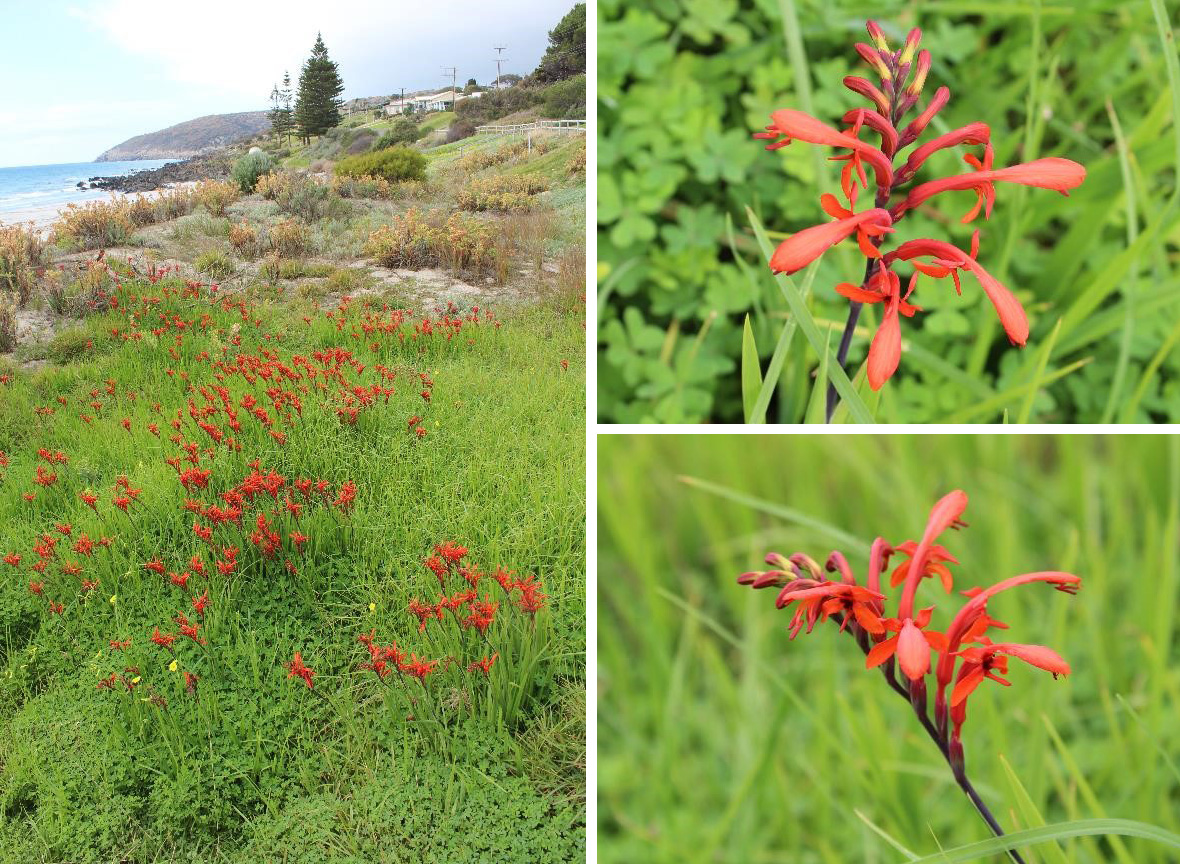The State Herbarium of South Australia documents all known plant taxa (species, sub-species, varieties and forms) native and naturalised (weedy) in South Australia. These taxa are listed in the Census of South Australian Plants, Algae and Fungi. All newly discovered state and regional records are added to the Census throughout the year. The records are based on preserved plant specimens, verified by a botanists, and housed in the vaults of the State Herbarium.

Population of Chasmanthe aethiopica at Penneshaw (C.J.Brodie 7912), a new weed recorded for South Australia. Photos: C.J. Brodie.
For all new records of non-native plants, an annual report is produced by the Weeds Botanist Chris Brodie and colleagues from the State Herbarium. The report includes the list of new weeds recorded for South Australia with locations, descriptions, and photographs. Also documented are updates to other taxa that have had a change in distribution, weed status or name. Other activities carried out by Weeds Botanist are also summarised, such as field trips or presentations to community groups.
The latest report is now available online:
Brodie, C.J., Lang, P.J., Canty, P.D. & Waycott, M. (2018). Regional Landscape Surveillance for New Weed Threats Project, 2017-2018: Annual report on new plant naturalisations in South Australia. (4.5mb PDF).
Also available for download are last year’s 2017 report (3.8mb PDF) and a compilation of all reports from 2010 to 2016 (3.7mb PDF).
These reports highlights to land managers, which non-native plant species have recently been found in South Australia and where. New records are listed as either “naturalised/established” (*) or “questionably naturalised/established” (?e).
Naturalised plant taxa are those that have originally been introduced by humans to an area, deliberately or accidentally. They have self-propagated without aid where they are not wanted, possibly spreading by natural means to new areas. An example listed in the recent report is Chasmanthe aethiopica (small cobra lily) or Eucalyptus densa subsp. densa. It is an attractive red-flowered bulbous herbaceous perennial plant. It was found naturalised on the upper dunes at Penneshaw beach on Kangaroo Island. This is the first record of this taxa growing wild in Australia.
Questionably Naturalised plant taxa (i.e. possible new weeds) are introduced non-native plants that may be self-propagating without aid, but are not well established or lack data to classify them as naturalised. An example of this in the report are a selection of species of eucalypts from W.A. and eastern Australia, including: E. eremophila subsp. eremophila, E. forrestiana, E stoatei and E. torquata.
Any unknown or possible new state or regional weed records should be reported to Chris Brodie (0437 825 685, chris.brodie@sa.gov.au).
Contributed by State Herbarium Weeds Botanist Chris Brodie.
